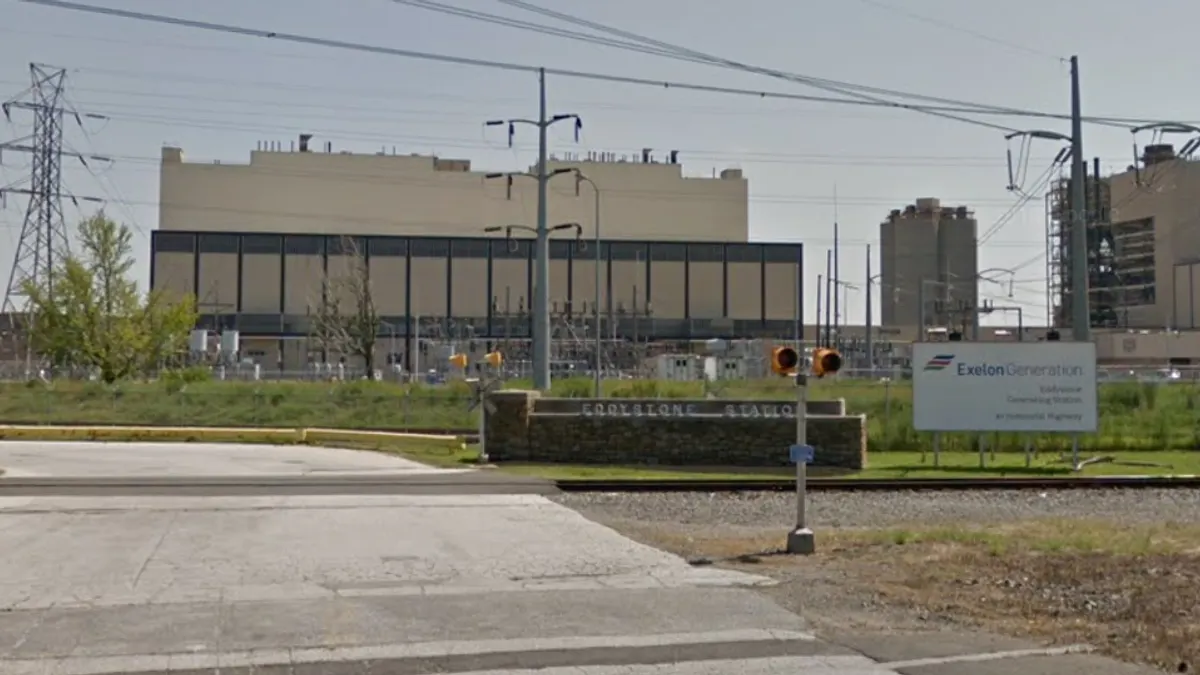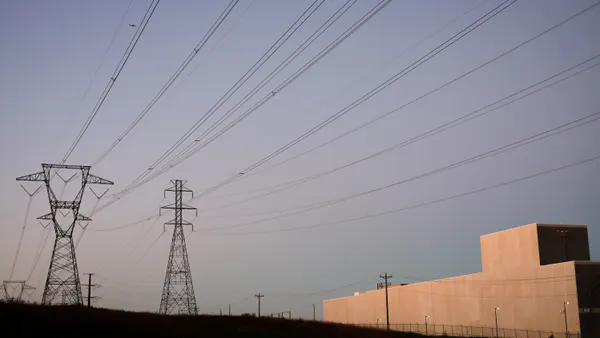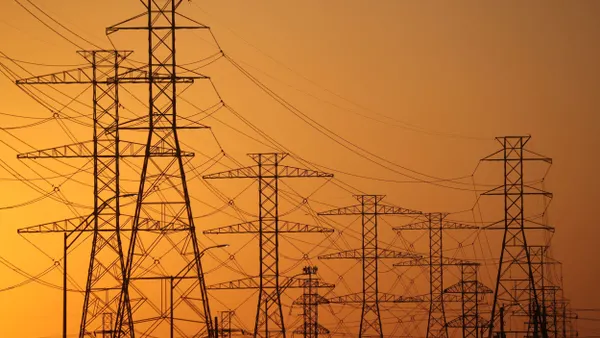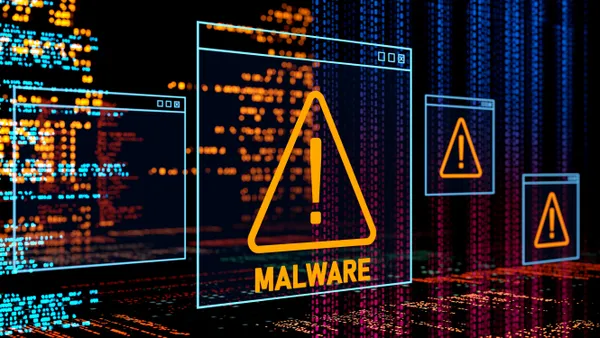Dive Brief:
- Data centers and other large, non-critical power consumers connected to the Electric Reliability Council of Texas transmission grid must accept curtailment during firm load shed events under a landmark law Republican Gov. Greg Abbott signed Friday.
- Senate Bill 6 pairs mandatory curtailment with a voluntary demand response procurement program under which loads of 75 MW or more could ramp down or switch to backup generation at utilities’ request. It also includes new interconnection disclosure and cost-sharing rules, mandatory interconnection study fees and protocols for colocating large loads with existing generators.
- S.B. 6 “will provide regulatory certainty for independent power producers, such as Vistra Corp. and NRG Energy, and data centers seeking colocation arrangements,” Capstone energy analysts Monica Chen and Jack Painter said in a Monday note.
Dive Insight:
Utilities, energy system analysts and ERCOT expect exponential growth of data centers and other large loads in Texas over the next several years. ERCOT forecasts 138 GW of large loads on its grid by 2030, up from 87 GW this year.
Even if only a fraction of proposed data centers get built, the boom could threaten grid reliability during the spring and fall months, when many thermal generators go down for planned maintenance, Aurora Energy Research said earlier this month. Reliability is already a concern in some parts of ERCOT — including the San Antonio area, where ERCOT is deploying more than 400 MW of mobile generation units and inked a costly “reliability must run” agreement with an aging 400-MW gas plant.
Aurora models suggest data centers will be the largest single source of load flexibility available to mitigate Texas’ reliability risk. By 2030, up to 50% of the expected 35 GW of ERCOT’s data center capacity could provide some degree of emergency reliability support, Aurora said.
S.B. 6 authorizes the Public Utility Commission of Texas to develop two demand management programs — one mandatory and one voluntary — to ensure Texas data centers and other non-critical large loads help rather than hinder reliability.
The law’s intent is “to make sure [large loads] pose as little reliability risk to the system as possible and [are] not drinking the milkshake of all other Texas power customers,” NRG Vice President of Regulatory Affairs Travis Kavulla said in an interview.
S.B. 6 could avoid a future scenario like Winter Storm Uri, the dayslong freeze in February 2021 that saw millions of residential customers cut off from the grid as nearby industrial loads hummed along, Kavulla added.
The mandatory demand management program applies to loads of 75 MW or greater that interconnect to ERCOT from January onwards. It allows utilities to disconnect eligible loads during firm load shed events and mandates the installation of shutoff equipment as a condition of grid interconnection.
The voluntary program is a competitively procured reliability service active during specific times of the year, subject to a minimum 24-hour notice period and off-limits to any large-load customer that “curtails in response to the wholesale price of electricity … or that otherwise participates in a different reliability or ancillary service,” the law says.
The advance warning period is key for this sort of voluntary program, especially one counting on participation from hyperscale data centers with sensitive IT equipment worth billions, Kavulla said.
“This should not be the kind of demand response where you’re calling it with no notice and curtailing the customer straight off,” he said.
The mandatory program will surely alleviate stress on the ERCOT grid during extreme weather events but the jury is still out on customer uptake for the voluntary program, Kavulla said. Some data center operators have sounded open to voluntarily curtailing their loads or switching to onsite backup generation when needed, while others have been more resistant, he noted.
Kavulla credited Texas legislators for “calling the question,” however.
“They have decided to create a market and test [customers’] willingness to participate,” he said. “Nothing gets people thinking like offering them money.”
Kavulla and Texas Blockchain Council President Lee Bratcher cheered other S.B. 6 provisions, like a $100,000 minimum initial interconnection fee for large load customers and a requirement that such customers disclose to utilities any potentially duplicative interconnection requests elsewhere in Texas.
Both provisions could mitigate the “phantom loads” gumming up utility and grid operator forecasts in Texas and elsewhere, Bratcher said in an email.
“The Texas Blockchain Council and our member companies are glad to see that Senate Bill 6 tackles the phantom load challenge associated with the interconnection queue [and gives ERCOT] a more accurate picture of future load growth,” Bratcher said.
Some experts say 80% to 90% of proposed data centers in the U.S. interconnection queue will never get built, in part because they duplicate requests made in other utility territories.
The next step for ERCOT and its continental counterpart, the North American Electric Reliability Corporation, is to “develop a non-firm load category for modeling purposes [that] would greatly increase the efficient utilization of transmission infrastructure and properly signal load behavior expectations to the transmission/distribution service providers,” Bratcher said.
And while Texas’s intrastate electricity market makes it something of a special case, some core S.B. 6 provisions are transferable to other states in the restructured Eastern markets, Kavulla said.
For example, states in the PJM Interconnection “could certainly precondition or accelerate interconnection of large loads on the basis of their willingness to participate in demand response,” he said.














